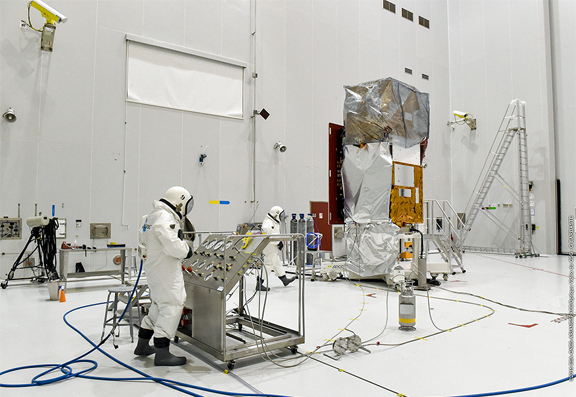[SatNews] The Sentinel-2A satellite has been fueled at the Spaceport as preparations continue for its launch on Arianespace's next Vega mission, which is scheduled for liftoff from French Guiana on June 22.

Sentinel-2A receives its propellant load inside the S5A fueling and integration hall of the Spaceport’s S5 payload preparation facility.
Photo is courtesy of Arianespace.
Built by Airbus Defence and Space as prime contractor, the spacecraft received its propellant load this week in the S5A fueling and integration hall—with the activity coming after Sentinel-2A's pre-launch checkout process. The upcoming mission is designated Flight VV05, signifying the fifth launch of the lightweight Vega vehicle, which has joined Arianespace's medium-lift Soyuz and heavyweight Ariane 5 for a complete launcher family to orbit commercial, governmental, institutional, scientific and experimental payloads. Vega's development was performed in a European program led by Italy's ASI space agency and industrial prime contractor ELV SpA. Flight VV05 also will mark Arianespace's fifth mission this year using a member of its launcher family, underscoring the company's sustained operational pace at the Spaceport in 2015. It follows two previous flights for Ariane 5, plus one each with Soyuz and Vega.
Sentinel-2A is the latest Earth observation satellite for Europe's ambitious Copernicus initiative, which is headed by the European Commission in partnership with the European Space Agency. Copernicus' goal is to provide accurate, timely and easily-accessible information for improving management of the environment, as well as understanding and mitigating climate change effects, while also contributing to civil security.
The 1,140-kg.-class Sentinel-2A will deliver high-resolution and multispectral capabilities, providing a 290 km.-wide coverage path and frequent revisits; and is to join the Sentinel-1A spacecraft orbited by an Arianespace Soyuz mission in April 2014.


